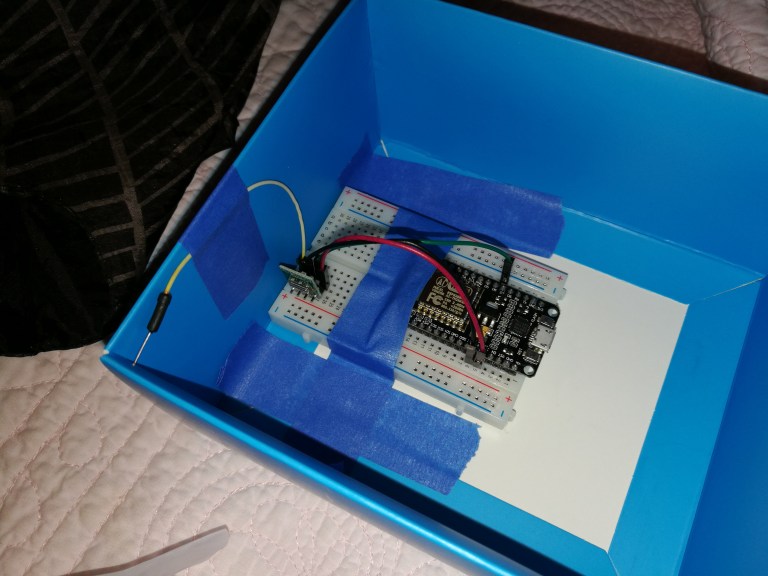I’ve worked with a few people who have Life Alert or similar devices, but either no longer can activate them on their own or can only do so with great difficulty. In some of these situations I modified their device to be controllable by voice through Amazon Echo. There are several ways of doing this. The video and pictures below demonstrate a custom button pusher, triggered through Amazon Echo.
That button pusher method though workable, should be seen as a last resort. The motor and moving parts add several possible points of failure. Care should be taken to give enough clearance so that the button can still be used manually. More generally, as with the other methods, this should be an alternate activation method, not the sole activation method.
Another option is to open up the device and wire directly to the “help” button itself, but this may not be an option if the device is not directly owned by the individual, or if there are warranty or liability concerns as you are now directly modifying the electronics.
Another option for devices that you can get a pendant for is to either wire to the pendant or to sample and playback the RF signal that the pendant sends. Below is an example of a circuit I built for someone which does exactly that and is still triggered by voice through Amazon Echo. This time it was for an AMAC Pers 850XL Personal Emergency Response System, but it should be able to work with other brands and models if you record the RF code from the matching pendant. There is the risk with this method that if the device locked up in a bad state that it would continually transmit and possibly block out the real pendant from working. This is at least partially mitigated by using a watchdog to reset the system if it locks up. This is important regardless of which of these methods are used.

The RF codes can be recorded and played back with transmitter and receiver modules like these: https://www.amazon.com/gp/product/B017AYH5G0
Note you need to know if the device is using 433 MHz or 315 MHz, or you can test both. Also note that you can get less noise during recording for a little more money with a superheterodyne type receiver. The code and method of recording is the same as one would do for an IR signal, other than the alternate module.
Both of these setups use an ESP8266 microcontroller on a board such as this one from Adafruit: https://www.adafruit.com/product/2821
And they are both emulating a WeMo outlet with code based off this project by Aruna Tennakoon: https://github.com/kakopappa/arduino-esp8266-alexa-multiple-wemo-switch
By emulating a WeMo outlet, they can be detected and controlled by an Amazon Echo, making them effectively voice activated.
Code for the button pusher version: https://github.com/bobparadiso/LifeAlertPusher
Code for RF version: https://github.com/bobparadiso/AMAC_850XL_Trigger






One thought on “Voice Activated Life Alert”